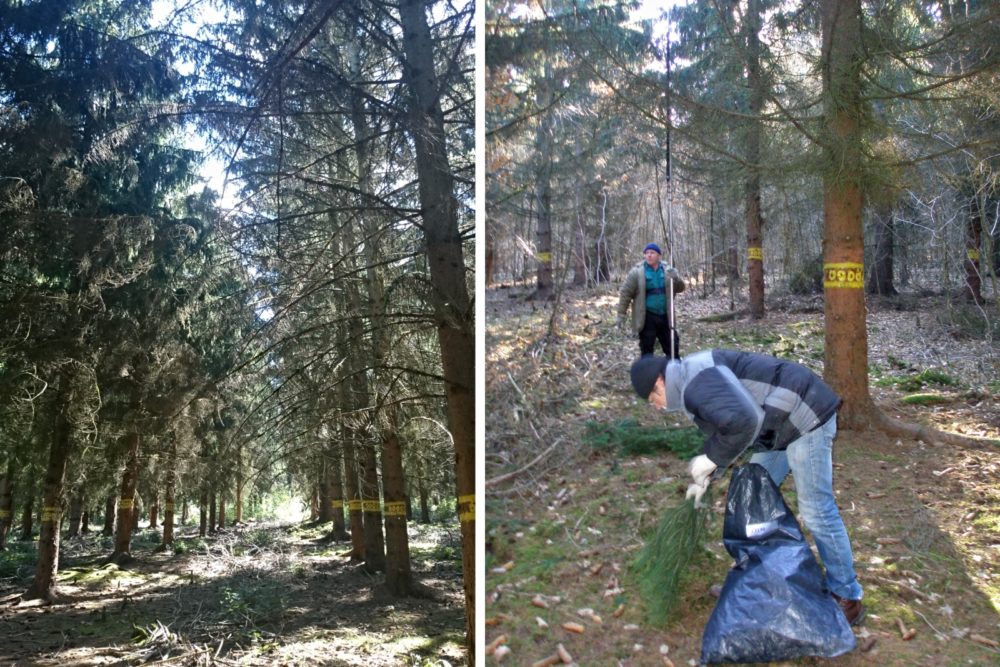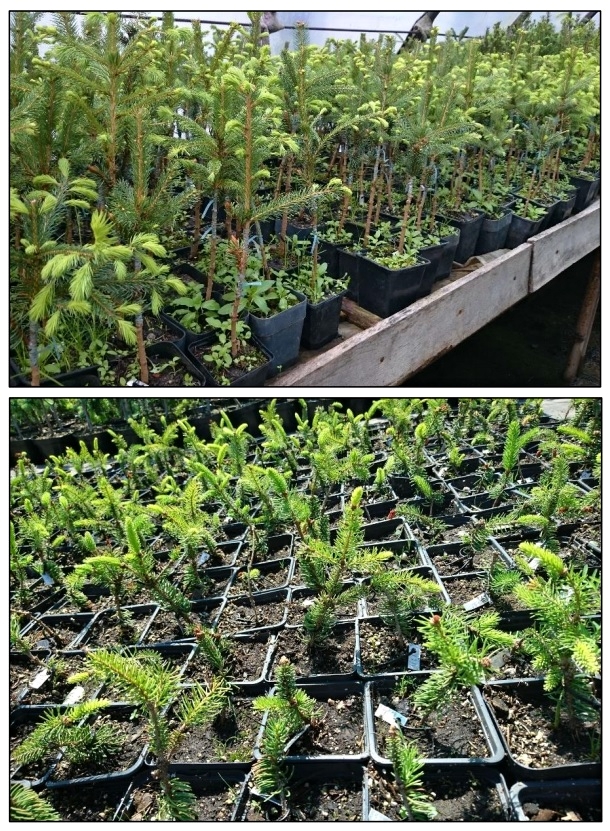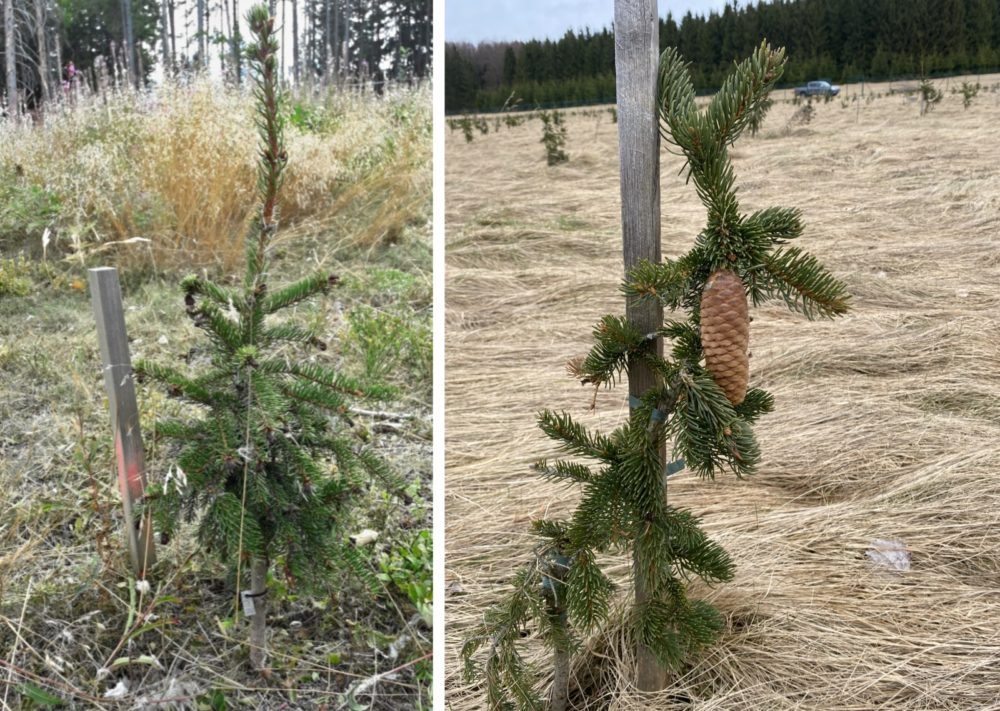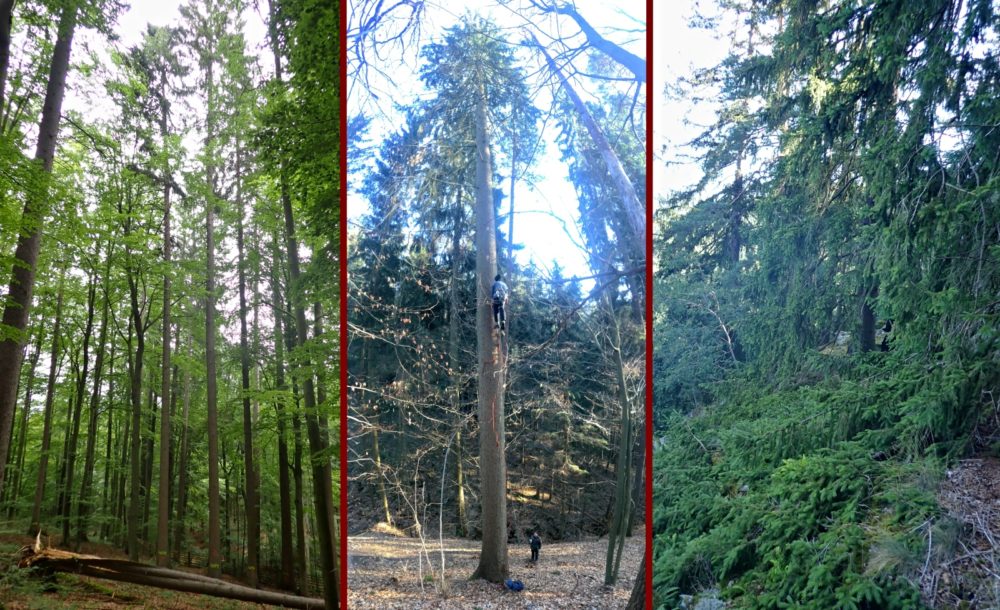Scientists save valuable ecotypes and populations of Norway spruce
 In recent years, Norway spruce populations have been declining due to long-term high temperatures, which has led to bark beetle infestations. This weakening of spruce populations has also been attributed to industrial emissions in the previous century. As a result, scientists are working to preserve the remaining valuable spruce populations and gather more information about these surviving individuals or stands. Despite some emerging concerns about cultivating Norway spruce, it remains the most widespread coniferous species that is native to its natural habitats, whether as the primary species or as part of a mixed species.
In recent years, Norway spruce populations have been declining due to long-term high temperatures, which has led to bark beetle infestations. This weakening of spruce populations has also been attributed to industrial emissions in the previous century. As a result, scientists are working to preserve the remaining valuable spruce populations and gather more information about these surviving individuals or stands. Despite some emerging concerns about cultivating Norway spruce, it remains the most widespread coniferous species that is native to its natural habitats, whether as the primary species or as part of a mixed species.
 Photo: left – Clonal archive ex situ of resistant Ore Mountains spruce at the locality Cukrák, Jíloviště (author Josef Frýdl, 2016); right – Collection of grafts in the ex situ clonal archive of resistant Ore Mountains spruce at the locality Cukrák, Jíloviště (photo Pavel Pexídr, 2016)
Photo: left – Clonal archive ex situ of resistant Ore Mountains spruce at the locality Cukrák, Jíloviště (author Josef Frýdl, 2016); right – Collection of grafts in the ex situ clonal archive of resistant Ore Mountains spruce at the locality Cukrák, Jíloviště (photo Pavel Pexídr, 2016)
The negative impacts of industrial activities on the forest environment, along with the effects of pests and diseases of forest tree species, and extreme climatic events, have had a significant impact on the forest management methods used in the Czech Republic over the past two centuries. This has resulted in a decline in the representation of some tree species and their variants, a reduction in biodiversity, and limitations in the performance of the forest’s basic functions. Measures that can help improve the sustainability of forests are becoming increasingly important. The Forestry and Game Management Research Institute (FGMRI/VÚLHM) has been actively engaged in addressing this issue through various research projects.
Regarding mentioned facts, there are solved by FGRMI scientists actual programs aimed to preservation and conservation of important ecotypes Norway spruce, in current time:
- Zachování genetických zdrojů rezistentních variant krušnohorského smrku ztepilého v kontextu realizace opatření ke zmírnění dopadů sucha a probíhajících změn prostředí /Preservation of genetic resources of Ore Mountains resistant Norway spruce variants in the context of implementing measures to mitigate drought effects and ongoing environmental changes/ (TA ČR SS1020076);
- Výzkum a ochrana genetické diverzity cenných zbytkových populací smrku ztepilého v souvislosti s adaptací na zvýšenou extremitu klimatu /Research and protection of the genetic diversity of the valuable remaining populations of Norway spruce in relation to adaptation to increased climate extremity/ (TA ČR SS01020260.
 Photo: Cultivation of grafted plants (above) and rooted cuttings (below) of resistant Ore Mountains spruce clones in the forest nursery PEXÍDR, s. r. o., Protivín (author Josef Frýdl, 2018)
Photo: Cultivation of grafted plants (above) and rooted cuttings (below) of resistant Ore Mountains spruce clones in the forest nursery PEXÍDR, s. r. o., Protivín (author Josef Frýdl, 2018)
Preservation of genetic resources of Ore Mountains resistant Norway spruce variants
The practical outputs of the first of this project include, for example, the establishment of a seed orchard in conditions in situ with rejuvenated clones of resistant variants of Ore Mountains spruce as part of the reconstruction of the older clonal archive Vernéřov (LS LČR Klášterec). This new seed orchard has been established in the Vejprty locality (LS LČR Klášterec) in the spring of 2024. The orchard consist of vegetative variants of rejuvenated clones of resistant Ore Mountains spruce, which were obtained from one of the oldest clonal archives located in Central Bohemia’s ex situ conditions (at the locality of Cukrák, Jíloviště).
Vegetative planting material was grown in sufficient quantity at the nursery facility PEXÍDR, s. r. o. in Protivín. At this workplace, as part of semi-operational research, the cultivation of so-called secondary cuttings of Ore Mountains spruce clones is also taking place, which will be used to supplement previously established experimental plantings in the Ore Mountains and for their further evaluation.
In this project, and in other research activities that follow, the goal is to complete and take advantage of the current research and semi-operational activities of the research team. The aim is to preserve and reproduce resistant variants of the Ore Mountains ecotype of Norway spruce and reintroduce them to their original distribution area in the Ore Mountains.
Research and protection of the genetic diversity of the valuable remaining populations of Norway spruce in relation to adaptation to increased climate extremity
In case of this second project, scientists pay attention is to activities aimed at saving the remaining populations of Norway spruce in the České Švýcarsko National Park, Podyjí National Park, in the Dolní Břežany area (property of the Archbishopric of Prague) and in the Květov u Orlíku nature reserve managed by the Orlík Company, s. r. o. The objective of the project is to identify high-quality individuals to establish new sources of reproductive material for forest trees, primarily first-generation seed orchards.
 Photo: left – Grafted plant of resistant Ore Mountains spruce clone in mother planting (mixture of clones) at the locality in situ under the management of ML Klášterec (author Jaroslav Dostál, 2020); right – Fruiting grafted plant in the seed orchard with clones of resistant Ore Mountains spruce established at in situ locality managed by ML Chomutov (author Radek Vernar, 2024)
Photo: left – Grafted plant of resistant Ore Mountains spruce clone in mother planting (mixture of clones) at the locality in situ under the management of ML Klášterec (author Jaroslav Dostál, 2020); right – Fruiting grafted plant in the seed orchard with clones of resistant Ore Mountains spruce established at in situ locality managed by ML Chomutov (author Radek Vernar, 2024)
When a sufficient number of recognized donor individuals was found, grafts have been taken in January-February and grafted onto rootstocks that were already prepared in the forest nursery PEXÍDR, s. r. o. Before planting of grafted plants, the genetic characteristics of the used clones were verified.
As part of the preparation for the seed orchard establishment at the Zvole locality (owned by the Archbishopric of Prague) in spring 2024, a scheme for distributing grafted plants of individual clones was prepared and an application for registering the seed orchard was submitted to the powered institution (Forestry Management Institute/ÚHÚL).
Once the seed orchard is established, it is expected that after a few years, quality reproductive material in situ will be produced in the form of seeds on site. Therefore, it will not only be about reproduction, but also about conserving the most valuable individuals for the next generation in one location.
 Photo: left – Elite trees of Norway spruce in the game preserve Květov managed by company Orlík, s. r. o. (author Martin Fulín, 2020); in the middle – Collection of Norway spruce grafts in the České Švýcarsko National Park (author Martin Fulín, 2022); right – Collection of grafts from layering Norway spruce in locality Ledové sluje in the Podyjí National Park (author Martin Fulín, 2020)
Photo: left – Elite trees of Norway spruce in the game preserve Květov managed by company Orlík, s. r. o. (author Martin Fulín, 2020); in the middle – Collection of Norway spruce grafts in the České Švýcarsko National Park (author Martin Fulín, 2022); right – Collection of grafts from layering Norway spruce in locality Ledové sluje in the Podyjí National Park (author Martin Fulín, 2020)
The project includes activities such as searching for surviving spruce individuals and conducting genetic characterization at the former LS LČR Kácov (currently LZ Konopiště) and the Klokočná demonstration facility (also locality managed by LZ Konopiště). In the mentioned localities, specific forest stands were identified where Norway spruce trees survived multiple bark beetle infestations. In the first locality, Kácov, fresh needles were collected from both adult and young trees for DNA analysis. The genetic characteristics of these trees were then compared to selected populations of Norway spruce from other regions of the Czech Republic.
In the second case (Klokočná), plant material consisting of freshly grown needles was collected from two different stands for comparative purposes. The first stand was managed in a selective manner, following the principle of diversity and consisting of trees of different ages. The second stand was located a few hundred meters away from the first one, and managed by bare cutting, following the principle of homogeneity and consisting of spruce trees of the same age.
Currently, the finalization and evaluation of the results of genetic analysis from the last collected samples of plant material is underway.
The article was written based on information and results from TA CR projects No. SS1020076 and SS1020260.
Prepared by: Ing. Josef Frýdl, CSc., Ing. Martin Fulín, Ph.D., FGMRI, Dpt. Of Forest Tree Biology and Breeding (VÚLHM, v. v. i., útvar Biologie a šlechtění lesních dřevin), frydl@vulhm.cz, fulin@vulhm.cz
